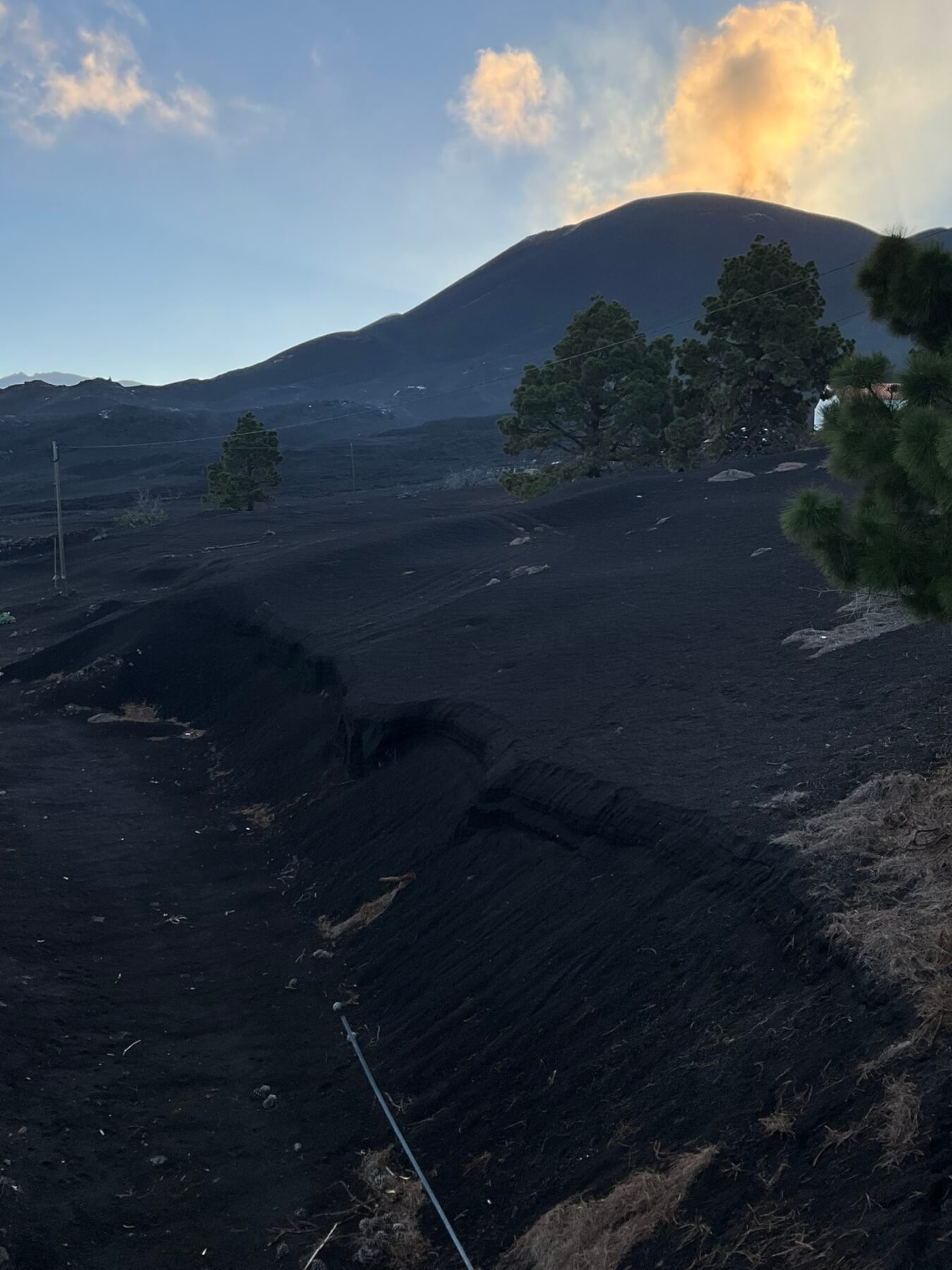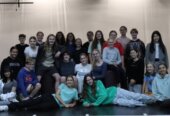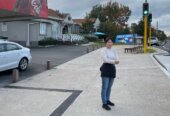After spending over a week in the field recording the damage inflicted by the 2021 Cumbre Vieja eruption in La Palma, I am now working long hours to go over the information we recorded. I am sitting in an historical Spanish house high on a volcanic mountainside in Tenerife, with the view clouded by dust blown over by Africa. Unlike the Waipā right now, we are in a heatwave.
It’s a juxtaposition being in such a gorgeous place and being solely focused on the devastation and loss I am examining on my laptop. Yesterday sitting around the table, a group of us worked past 10:30pm, the days are long. My colleagues Sharon and Ben are working tirelessly to put together part two of a documentary, Lava Bombs, on the impacts to the communities (I recommend watching part one), and the suffering they are still experiencing. My colleague Elodie is back at NASA in the USA, working with me on satellite data that shows the impacts from space. My colleague Arianna is back in North Carolina, thinking about the lava flow itself that caused so much loss. My colleague Tamsin has been organising drone footage collected in the field to give an important link between the information gathered on the ground by us, and from satellites in orbit.
Messages and emails go back and forth discussing issues and observations that are popping up as we go. Emails have been fired off to colleagues in New Zealand asking about work done at home to help people through the issues I am seeing here, as well as setting up the next steps in moving my research forward. This is a glimpse into what international research looks like.
It is definitely not sipping cocktails by the pool in the Canary Islands, but it is so very rewarding working towards our goals with likeminded friends and colleagues who truly care about people and volcanoes. The planning process for this trip began over a year ago, now we are starting to see results.
Our goals revolve around learning as much as we can, then putting our results into a format that is useful for the local people, and communities that will be impacted by eruptions in the future – including in New Zealand. Too often research is undertaken then published in academic journals with no thought of getting the results to people who need it, in a format that can be useful. This is partly because it is not an easy task, but my team and I are dedicated to this process.
The images I am focused on are of people’s homes and businesses, banana plantations, a school, neighbourhoods… Now with cracks and holes from dense, hot, thick lava flows bulldozing their way though. In many cases, there is no sign of the house that once stood there at all. I walked across the sharp lava flows with satellite images taken prior to the eruption in my hands. Many times, I experienced a sinking feeling when I realised, I was standing on someone’s home, or I should have been looking right at someone’s front door. If I ever needed more motivation to push forward, this is it.











